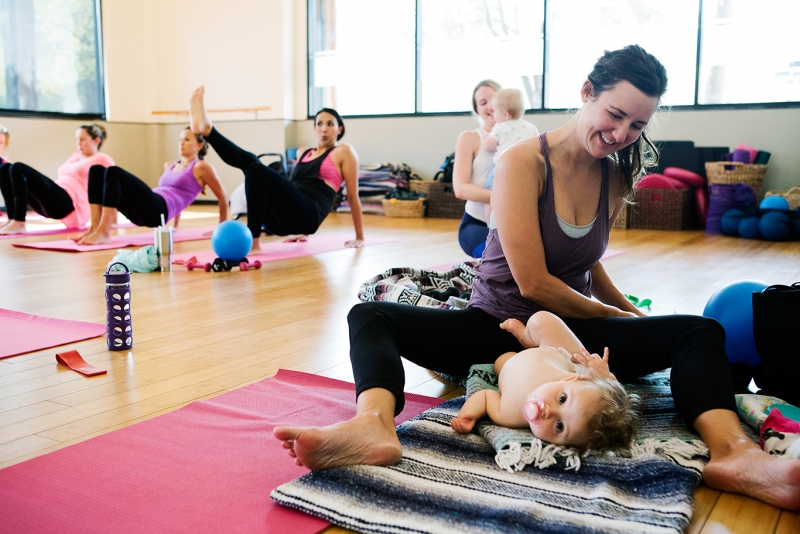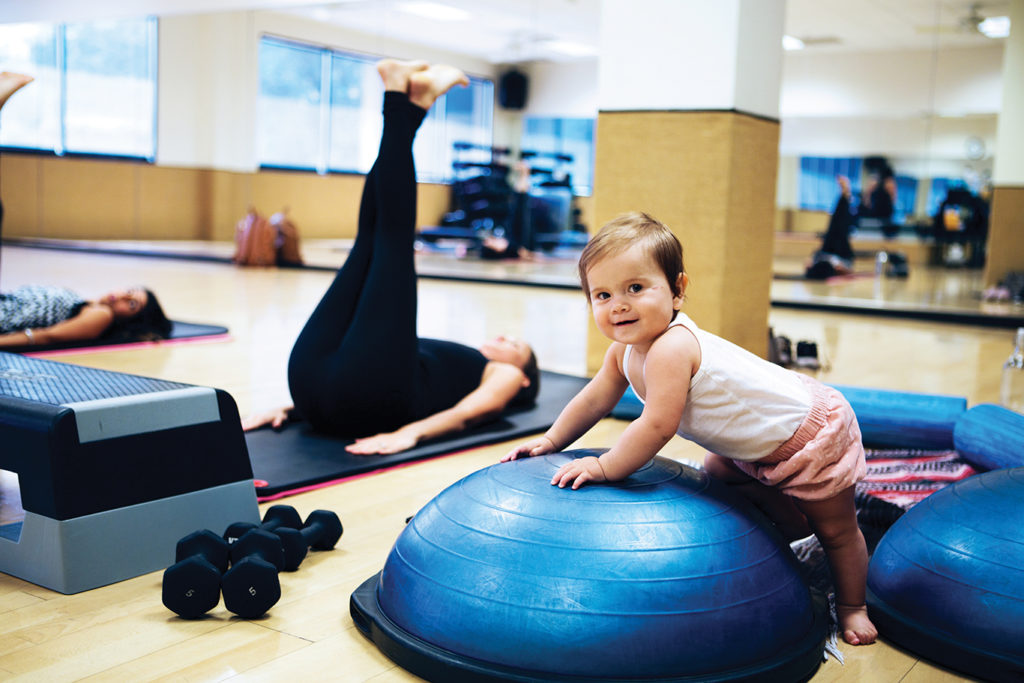Mom-Friendly Places to Work Out in Austin

The benefits of exercise on your mind, body and spirit are vast. From weight loss and muscle strength to feeling happier, less stressed and having more energy — exercise should be part of our daily routines. For mothers, the need for these benefits increase, yet without the perfect mix of time, support and convenience, exercise and self-care often seem almost impossible.
I turned to our community at Hello My Tribe for answers on where moms go in town for mom-friendly workouts. We received quite a few responses about home programs that are useful, but we wanted to highlight places to visit in person. Plus, there are additional benefits of getting out of your home, having contact with other people and building your community of other moms through exercise.
The newest Castle Hill Fitness location offers childcare as well as Mama Strong, a baby-friendly class offered multiple times throughout the week. With group classes, a spa, a pool and a sauna and steam, Castle Hill takes wellness to a new level for moms.
Barre3 is a boutique studio that features a full-body workout combining strength conditioning, cardio and mindfulness. In addition to a great, sweaty workout designed for a woman’s body, they offer childcare. With four locations in the Austin area, Barre3 is a fantastic option.
The YMCA has locations easily accessible all throughout Austin. It offers a wide variety of adult classes, youth programs, childcare, activities and amenities. With community at the core, the YMCA offers affordable pricing and a sliding scale for membership access.
Lifetime Fitness meets so many needs for the entire family, with a gym, pool, packed schedule of group classes, spa, cafe and two of their Austin locations featuring a child center.
The JCC is another great option for moms and the entire family, with a fitness center, group classes, a pool, massage services and childcare. The JCC is in the process of building a new family friendly facility including a waterpark, tennis courts, a new playscape and an outdoor pavilion.
FIT4MOM has an option for every mom with signature classes like Stroller Strides, Strides 360, Stroller Barre, Fit4Baby, Body Back and Run Club. With locations all over Austin, classes are held outdoors and are always baby- and child-friendly. With this amazing workout comes the bonus of a positive community of other moms.
FemmePower Fitness offers small group and one-on-one coaching for women and mothers in Central Austin. Its baby-friendly workouts are unique to you, your current level and your short- and long-term goals.
Additional options around town where childcare is available:
24Hour Fitness, LA Fitness,
Burn Boot Camp.


Post Pregnancy Workout Tips
Hello My Tribe expert, Christina McGee PT, DPT at Sullivan Physical Therapy, shares a few of the most common issues related to pregnancy, birth and exercise.
Alex: How can we best protect our cores after having a baby?
Christina: Similar to doing core work during pregnancy, anything that looks like a crunch or sit-up can cause strain to the abdomen and high pressures at the pelvic floor and, therefore, should be avoided. For the first six weeks postpartum, you should also avoid anything that requires elevated hips, such as bridges. Diastasis recti, a separation of the abdominal musculature, often results from the stretching of the abdomen during pregnancy and can be made worse through incorrect exercise. A diastasis recti can impair spinal and pelvic stability, give your belly a pooched or bloated appearance and potentially cause pain. Modifications need to be made to exercise routines in order to prevent worsening and to help healing. Get checked by a provider for a diastasis recti before returning to core strengthening.
Alex: What is the pelvic floor?
Christina: In other countries, it is the standard of care for everyone to see a pelvic floor physical therapist following delivery — whether it be vaginal or cesarean — to assess muscle and tissue healing, to address any complaints and to give recommendations for safe return to exercise. The pelvic floor is a bowl-like set of muscles under your pelvic organs that support posture and organs while acting as the “gatekeepers.” A well-functioning pelvic floor controls passing urine, gas and bowel movements and allows penetration during sexual activity, exams and tampon use.
In addition to childbirth, exercise gone wrong can impair pelvic floor musculature, resulting in compromised bladder and bowel functioning. This can include difficulty emptying, leakage, painful intercourse, tailbone pain, pain in the genitals/rectum and discomfort and even pain while sitting.
Alex: What else should women be paying close attention to after adding exercise back in after childbirth?
Christina: A lowering of pelvic organs — bladder, rectum or uterus — known as prolapse, is due to abdominal pressures, often from pregnancy and childbirth, but also brought on by straining with constipation or heavy lifting. A weakened, lengthened pelvic floor can lessen the support structure under these organs and lead to or perpetuate prolapse. Often, women with prolapse will describe a heaviness, feeling like organs are falling, feeling like they’re always wearing a tampon or feeling a bulge at the vaginal opening.
Alex: As a pelvic floor therapist, what is the best remedy for healing your body after childbirth?
Christina: It is important to allow your body time to rest and heal postpartum. The first three weeks after labor should be spent in or near the bed, bonding with your baby. Avoid lifting, straining and prolonged standing. You should not lift anything heavier than your baby — keep in mind, laundry, a grocery bag and a vacuum are all heavier than your baby and should be avoided during these early weeks. This period of rest allows your tissues and organs to heal appropriately and return to the proper lengths and positions. Trying to push through what would ordinarily be simple chores, errands or exercise can cause a great deal of harm.






